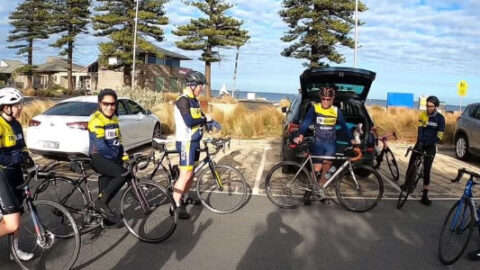Hill Running Technique Tips

- Tri Alliance Athletes in training
As we start to build hill running into our training program, it is important to know HOW to run both uphill AND downhill both to make it easier and to minimise the risk of injury. Hill running should only be introduced into your training once you have a solid base of around 6-8 weeks of endurance and strength. If you do not have this base, then you will stay on the flat until you do as it is important for the conditioning phase of your training.
Our sessions will be easing into hill running (save the efforts for later!) and work purely on form and technique to begin with. It is also super important that you DO NOT do any hill training when recovering/managing a lower leg injury. Speak to our coaches if you are in doubt.
Benefits of Hill Training?
- strengthens your hamstrings, calves, glutes, hip flexors and achilles tendons – all used in normal running.
- helps develop power and muscle elasticity
- improves stride frequency and length
- promotes strength endurance
- develops maximum speed and strength (ideal for short course athletes)
- Adds variety to your normal training!
Hill technique Tips
Uphill Running
- As you approach a hill, ensure you are holding good running form. (good posture, relaxed upper body, looking ahead)
- Increase your cadence – shorter/smaller strides (same principal as riding uphill!) make sense?
- Lift your knees slightly higher than normal – although do not over exagerate.
- Concentrate on swinging your arms lower and shorter in time with your cadence.
- Stand up tall – you can lean in very slightly from the hips, but make sure you are not hunched over. (this detracts from your prime movers)
- Don’t stare at your feet. Focus on the ground 3-5 metres in front of you. This will help you stay mentally focused on the hill.
- Continue to shorten your stride when the grade of the hill gets steeper and then fade back to normal stride as the grade eases of.
- Maintain a steady effort and regulate your breathing. If you are ‘panting’ too much then your effort is too high or your stride length too long. It shouldn’t be too hard this early in the game.
Downhill Running
- The best way to run downhill is to lean forward slightly and take short, quick strides.
- Don’t lean back and try to brake yourself.
- Keep your hips under your centre of gravity.
- Although it’s tempting to overstride as your pace increases, over striding pounds the feet, stresses the hamstrings and overuses the quadriceps muscles with each step.
- Keep your feet lower to the ground and control each step – this minimises impact.
- Your stride will cover more ground downhill than it does on the flat, however your stride should still feel slightly shorter.
So with these few hill running technique tips, the introduction of hills into your training will be easier and with less chance of impact injuries. Always listen to coaches advice and if ever in doubt speak to one of our coaches.
Happy running!







